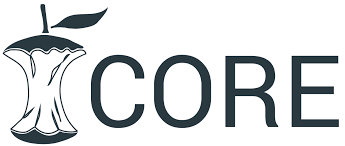DETECTION OF PNEUMONIA BY USING NINE PRE-TRAINED TRANSFER LEARNING MODELS BASED ON DEEP LEARNING TECHNIQUES
DOI:
https://doi.org/10.25195/ijci.v47i1.281Keywords:
Pneumonia, Chest X-ray, Pre-trained transfer learningAbstract
Pneumonia is a serious chest disease that affects the lungs. This disease has become an important issue that must be taken care of in the field of medicine due to its rapid and intense spread, especially among people who are addicted to smoking. This paper presents an efficient prediction system for detecting pneumonia using nine pre-trained transfer learning models based on deep learning technique (Inception v4, SeNet-154, Xception, PolyNet, ResNet-50, DenseNet-121, DenseNet-169, AlexNet, and SqueezeNet). The dataset in this study consisted of 5856 chest x-rays, which were divided into 5216 for training and 624 for the test. In the training phase, the images were pre-processed by resizing the input images to the same dimensions to reduce complexity and computation. The images are then forwarded to the proposed models (Inception v4, SeNet-154, Xception, PolyNet, ResNet-50, DenseNet-121, DenseNet-169, AlexNet, SqueezeNet) to extract features and classify the images as normal or pneumonia. The results of the proposed models (Inception v4, SeNet-154, Xception, PolyNet, ResNet-50, DenseNet-121 DenseNet-169, AlexNet and SqueezeNet) give accuracies (98.72%, 98.94%, 98.88%, 98.72%, 96.2%, 94.69%, 96.29%, 95.01% and 96.10%) respectively. We found that the SeNet-154 model gave the best result with an accuracy of 98.94% with a validation loss (0.018103). When comparing our results with older studies, it should be noted that the proposed method is superior to other methods.
Downloads
Downloads
Published
Issue
Section
License

This work is licensed under a Creative Commons Attribution-NonCommercial-NoDerivatives 4.0 International License.
IJCI applies the Creative Commons Attribution (CC BY) license to articles. The author of the submitted paper for publication by IJCI has the CC BY license. Under this Open Access license, the author gives an agreement to any author to reuse the article in whole or part for any purpose, even for commercial purposes. Anyone may copy, distribute, or reuse the content as long as the author and source are properly cited. This facility helps in re-use and ensures that journal content is available for the needs of research.
If the manuscript contains photos, images, figures, tables, audio files, videos, etc., that the author or the co-authors do not own, IJCI will require the author to provide the journal with proof that the owner of that content has given the author written permission to use it, and the owner has approved that the CC BY license being applied to content. IJCI provides a form that the author can use to ask for permission from the owner. If the author does not have owner permission, IJCI will ask the author to remove that content and/or replace it with other content that the author owns or has such permission to use.
Many authors assume that if they previously published a paper through another publisher, they have the right to reuse that content in their PLOS paper, but that is not necessarily the case – it depends on the license that covers the other paper. The author must ascertain the rights he/she has of a specific license (a license that enables the author to use the content). The author must obtain written permission from the publisher to use the content in the IJCI paper. The author should not include any content in her/his IJCI paper without having the right to use it, and always give proper attribution.
The accompanying submitted data should be stated with licensing policies, the policies should not be more restrictive than CC BY.
IJCI has the right to remove photos, captures, images, figures, tables, illustrations, audio, and video files, from a paper before or after publication, if these contents were included in the author's paper without permission from the owner of the content.











